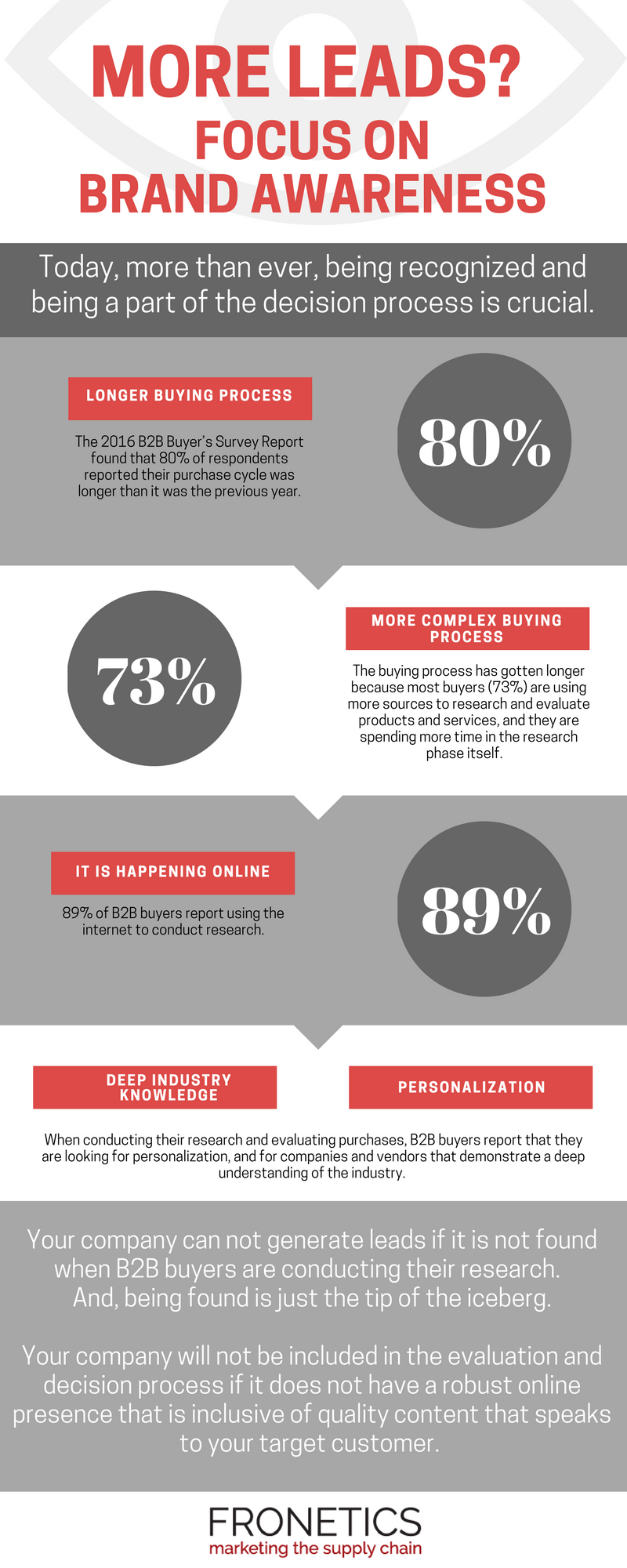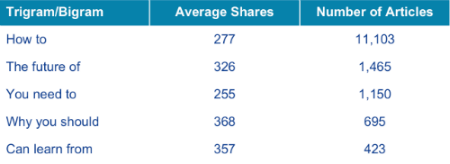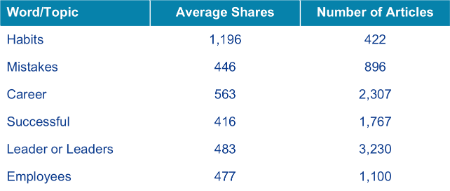
by Fronetics | Jan 10, 2017 | Blog, Content Marketing, Marketing
You can do these three quick things in your blog posts to improve SEO and help your target audience find your content.
Search Engine Optimization: It’s a phrase every blog writer looking to grow readership has wrestled with at one time or another. Part science, part art, SEO writing can evade even the most seasoned blogger. You want people searching the internet to find your blog, but you also want readers to enjoy your posts and not feel like they’re written for machines.
So, how do you write for search engines while ultimately trying to appeal to human beings? The answer is, of course, trying to balance the two objectives.
Three quick SEO tips for blog posts
Ultimately, your content will be effective only if it is valuable to your target audience. That should be your priority when planning and producing content like blog posts. But you can also keep these three quick tricks in mind to optimize your posts, and thus increase the likelihood internet searchers will find them in the first place.
1) Use your keyword(s) in the right places.
A thoughtful keyword strategy should be central your content strategy. Also crucial is the strategic placement of your keyword(s) within your blog posts.
Firstly, it’s important to know that search engines don’t read all parts of your blog posts the same. They weigh some features — like your title or subheadings throughout the post — more heavily than, say, the last sentence. This helps them quickly determine what your post is about since, in theory, your title and your headings most likely reflect the topic about which you are writing.
That being said, you should prominently feature any keyword you are interested in ranking for in several key places. These include:
Including your keyword in these places lets search engines know unequivocally that your post concerns that topic. That way, readers looking for articles like yours will be more likely to find them when searching that keyword.
2) Incorporate internal and external (outbound) links.
Including both internal and external links in your posts can improve SEO. Obviously linking to other content within your site or blog is beneficial to you and the reader: You keep the reader engaged, while the reader can find other related content of interest.
Sometimes our clients are hesitant to use outbound links, or hyperlinks to pages on other websites. They’re afraid of driving readership to other places and away from their blog.
Firstly, a simple solution to this concern is to ensure all external links open in a new window. That way, the blog post someone was reading remains open, along with the new page from the link. When the person finishes browsing the page from the link, your blog post is still available and at the ready in the user’s web browser.
Secondly, including external links in your posts improves SEO. Well, I should say using trustworthy external links improves SEO. See, search engines consider the value of the links you use. So, if you link to a well-known site, like nytimes.com, you are actually benefitting from that site’s credibility and popularity. Some top factors search engines consider when it comes to outbound links include:
So, it is worth noting that you should only include external links from credible sources that are relevant to your posts’ content. Linking to uncredible sites can actually harm your SEO.
3) Include an image.
Images aren’t just nice pictures for readers’ viewing pleasure — they help strengthen the message of your post. And, if optimized properly, they can improve your post’s SEO.
Here’s how it works: When you place an image within a post, the content management system automatically pulls the image file name into two hidden fields: the alt tag and the title tag. Web browsers read alt tags as descriptions of the image, so that if the image doesn’t load, users can still see what the image is supposed to be. Screen readers also use this field to communicate the content of the image to visually impaired users. Every image, therefore, should have alt text.
But beyond that, alt text is used by search engine crawlers to determine the content of the image and surrounding text. If a keyword is included in the alt text, it supports your ranking for that keyword.
It’s important to note that keyword stuffing in your alt text won’t help your cause. That can cause your site to be perceived as spam. Instead, you should choose an image that naturally is described by your keyword and is relevant to your content. Your image title, too, should be descriptive and reflective of the content.
These are three quick SEO tips to help improve the visibility of your blog. It’s worth mentioning again that you should never artificially stuff your blog posts with keywords or links or images. After all, search engines will continue to evolve to help readers find what they’re looking for, meaning they’ll become increasingly better at spotting any b.s. you try to sneak past them (and they’re already really good at that).
Your best bet to improve SEO is to create content that is valuable to your target audience. Then you should use these best practices as a guide to help users looking for content like yours to find it.
Related posts:


by Fronetics | Jan 9, 2017 | Blog, Content Marketing, Marketing, Social Media, Strategy, Supply Chain
Why brand awareness is important to growing your business
The singular goal of most companies that contact Fronetics is to generate more leads — today. This is not surprising in that leads are necessary to generate sales, and sales are necessary to revenue generation and to growth. What is surprising is the number of companies who do not recognize the critical role brand awareness plays in lead generation.
Brand awareness is the likelihood that your company’s brand, products, and services are recognized by consumers. Simply put, if consumers don’t know your company exists and/or don’t know what your company does or what your company offers, your company won’t be a part of their decision process.
Today, more than ever, being recognized and being a part of the decision process is crucial.
The new B2B buying process
The buying process for B2B buyers has become more complex and longer. The 2016 B2B Buyer’s Survey Report found that 80% of respondents reported their purchase cycle was longer than it was the previous year. The buying process has gotten longer because most buyers (73%) are using more sources to research and evaluate products and services, and they are spending more time in the research phase itself.
When conducting their research and evaluating purchases, B2B buyers report that they are looking for personalization, and for companies and vendors that demonstrate a deep understanding of the industry.
The place they are turning to conduct their research, and to evaluate purchases, is online: 89% of B2B buyers report using the internet to conduct research. Specifically, they are going online to: conduct web searches, look at vendor websites, read reviews, use social media, and participate in online forums.
The importance of investing in brand awareness
Your company can not generate leads if your company is not found when B2B buyers are conducting their research. And, being found is just the tip of the iceberg. Your company will not be included in the evaluation and decision process if it does not have a robust online presence that is inclusive of quality content that speaks to your target customer — that is, content that educates, informs, and identifies how your company can meet the needs of your target customers. It is about positioning your company as a knowledge leader, building trust, and establishing relationships. It is about brand awareness.
Building brand awareness takes time and dedication. Companies that are willing to invest their time and resources to brand awareness are rewarded – not just with leads, but with quality leads.
Too often, I see companies who are unwilling to invest either the time or money in brand awareness. One of the most frustrating things to see is a company that gives up too soon. These are companies who have realized significant gains — they have, for example, increased traffic to the website through organic, referral, direct, and social sources; decreased bounce rates; increased social reach; and increased social engagement. But, because their lead generation has not immediately sky rocketed, they decide to either reduce or eliminate their digital and content marketing activities. It is frustrating because these companies have built a strong foundation, and they are on the tipping point of success.
With the B2B buying process taking longer than ever, with buyers spending more time researching and evaluating their decisions, and with B2B buyers turning to the internet and critically evaluating companies on how they present themselves, investing the time and resources to brand awareness is critical.
As Geoffrey Chaucer said, “Patience is a conquering virtue.”

You may also like:

by Fronetics | Jan 5, 2017 | Blog, Content Marketing, Logistics, Marketing, Social Media, Supply Chain
Turn to these 7 Twitter accounts for news, insights, and thought leadership in the supply chain space.
Twitter is a platform for socializing, entertainment, breaking news, lead prospecting, and much more. But Twitter is only as useful as the people you follow. So how do you choose between the 317 million monthly active users?
We compiled our list of the must-follow Twitter accounts for the supply chain professional in 2017. These users and companies have a lot to offer in terms of news, insights, and thought leadership. They also are active posters, meaning you’ll see frequent content from them, and are listed in no particular order.
Are you following these 7 Twitter accounts for supply chain thought leadership?
Tania Seary was recently named “Influencer of the Year” by Supply Chain Dive and is an active poster on all things relating to supply chain logistics, with a particular commitment to procurement development. Based in London, Seary is the founder of Procurious, The Faculty, and The Source Australia.
Lora Cecere is the founder of Supply Chain Insights, an industry research group. A prolific writer, Cecere focuses on the changing face of enterprise technologies. Her current research interests include the digital consumer, supply chain sensing, demand shaping and revenue management, market-driven value networks, accelerating innovation through open design networks, the evolution of predictive analytics, emerging business intelligence solutions, and technologies to improve safe and secure product delivery.
Steve Banker is a veteran supply chain analyst who writes for Logistics Viewpoint and Forbes. Based outside of Boston, Banker heads up the Supply Chain & Logistics consulting team at ARC Advisory Firm. His technology focus areas include transportation management, managed transportation services, warehouse management, and supply chain planning.
Procurious is a business network and resource for progressive procurement professionals founded by Tania Seary. Content ranges from networking and career advice to thought leadership pieces and industry news.
Logistics Management offers editorial content aimed at executives, managers, and other professionals in the logistics and supply chain industries. It recently hosted virtual conference on streamlining logistics and supply chain operations.
Supply Chain Dive is a DC-based news aggregate that offers daily coverage of shipping / logistics / tracking, inventory management, storage / warehousing, freight & fulfillment.
Logistics News is an independent, global source for news related to transport, shipping, trucking, or logistics.
Are you following us? @fronetics distributes original content and curates interesting, informative, and relevant content from other supply chain publishers across the Twittersphere and beyond.
Who are your must-follow Twitter accounts?
Related posts:


by Fronetics | Jan 4, 2017 | Blog, Content Marketing, Logistics, Marketing, Supply Chain
Supply chain professionals should be following these eight blogs to keep up with the latest industry news and happenings in the coming year.
Fronetics is currently conducting a survey to determine which supply chain blogs you think are the best of 2017. (You can vote for that here.) But we also wanted to weigh in with some of the blogs we’re following.
These eight supply chain blogs are great resources for industry news and trends. They cover a range of topics, from technology to strategy, and feature thought leadership by some of the brightest minds in the field.
8 must-follow supply chain blogs
Here is our selection of blogs with timely content that supply chain executives need to read, in no particular order:
1) Supply Chain Management Review
This vast website includes trending articles on supply chain and logistics strategies developments, many written by university-level professors. Read this blog.
2) Logistics Viewpoints
This blog features think pieces from three leading supply chain and logistics analysts with the mission to provide clear and concise analyses of logistics trends, technologies and services. Read this blog.
3) Supply Chain Nation Blog
Interesting news bits from “around the supply chain horn,” this is JDA Software’s blog, a powerhouse in supply chain solutions. Read this blog.
4) Supply Chain Matters
The blog of Bob Ferrari offers his expertise on all aspects of supply chain business processes and supporting information technology. Read this blog.
5) Supply Chain Brain
A portal aimed at supply chain executives featuring original and aggregated content touching on multiple industries. Read this blog.
6) Supply Chain Shaman
Lora Cecere’s blog focuses on “the use of enterprise applications to drive supply chain excellence.” Read this blog.
7) Argentus Blog
Argentus is a boutique recruitment firm specializing in supply chain management and procurement. The blog offers insight into pressing issues in supply chain talent acquisition, career management, and more. Read this blog.
8) Cerasis Blog
The Cerasis blog covers industry trends, educates, explains rules and regulations, busts myths, and has awesome infographics. Read this blog.
Bonus/shameless plug: Fronetics Blog
Our blog covers topics of interest to the supply chain industry from marketing and social media to lead generation and strategy. Read our blog.
Related posts:


by Fronetics | Jan 3, 2017 | Blog, Content Marketing, Marketing, Social Media
The most popular content from LinkedIn in 2016 offers some headline inspiration for businesses hoping to improve reach and impact in 2017.
Buzzsumo’s Steve Rayson wrote an article the other day that really struck a chord with what we do here at Fronetics: He used data to analyze patterns in successful content. More specifically, Rayson examined the most popular content posted on LinkedIn in 2016 and identified headlines and topics that were most successful last year.
The results are really interesting and say a lot about what content resonates with the general LinkedIn community. I’ve summarized his findings below.
Most popular headline phrases
Rayson examined the 10,000 most-shared posts on LinkedIn in 2016 and identified the most common two- and three-word phrases from their headlines. Some of the most frequent included:
- How to
- You need to
- Why you should
- Can learn from
- The future of
Rayson then pulled all the headlines from 300,000 posts using these phrases. He found that not only did more headlines include these phrases, but also that posts with headlines using these phrases received more shares than average.
For context, the average number of shares for all LinkedIn posts in November 2016 was 230. Here are Rayon’s findings.

Most impactful headline words and topics
Rayson conducted the same exercise for single words or topics in headlines. His table below shows some of the best-performing words and their social reach.

How can I write better headlines?
Rayson concludes from his analysis that LinkedIn’s top-performing content — in terms of shares — usually involves instruction on how to be successful in one way or another. This is probably no surprise, given the network’s career-oriented nature. But it can be useful to marketers who are looking to create and distribute content through this platform in the coming year.
Rayson’s takeaways offer some useful suggestions for framing LinkedIn content to improve reach and impact.
- Write about success: We all aspire to do better as professionals. LinkedIn is a place we come to find advice. The core topics that do well are personal success (tips, career advice, personal skills, leadership) and business success (team management, sales, including staying ahead on top of industry trends and case studies).
- Share advice and make it personal: Does your content provide practical advice to someone personally? It can range from boosting sales to managing a difficult employee or boss. Can you appeal to users on a very personal basis, e.g. you need to or you should.
- Focus on work: Will your insights make someone more successful at work? Can you distil this down into habits or tips or mistakes to avoid.
- Talk trends and the future: Can you provide insights into industry trends and help people gain a better perspective on the future?
- Stick with what works: If you find a format that works, do not be afraid to reuse it.
Related posts:


by Fronetics | Jan 2, 2017 | Blog, Content Marketing, Logistics, Marketing, Social Media, Supply Chain
It’s time to cast your vote for the top blog in the supply chain and logistics industries!
Fronetics is conducting its 3rd annual survey to uncover the top industry blog of 2017. Help us by voting for your favorite blog. Responses will be collected through January 25, 2017. Vote now so your voice will be heard!

All responses are confidential and will be reported in aggregate. No identifiable information (individual or company) will be attached or included. Please contact [email protected] with any questions.
Interested in who won in 2015 and 2016?













